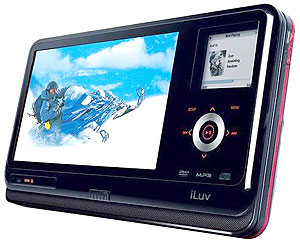In the early 2000s, Apple introduced the iPod, an MP3 player with the unheard-of storage capacity of 5 gigabytes. Six iPod generations later, the iPod plays songs, movies, games and photo slideshows, and you can store up to 160 GB of any type of file you want.


In the early 2000s, Apple introduced the iPod, an MP3 player with the unheard-of storage capacity of 5 gigabytes.
Six iPod generations later, the iPod plays songs, movies, games and photo slideshows, and you can store up to 160 GB of any type of file you want.
The evolution has been a lesson in consumer electronics marketing and development: Millions of people are so hooked on the iPods. In 2007 iPod released the sixth-generation iPod classic.
This is a digital audio as well as video player, video player and portable hard drive, making it a full-fledged portable media centre. It’s available in 80 to 160GB capacities and has a coloured display.
In addition to the iPod classic, there are several other devices in the current generation of iPod players.
iPod touch, that arrived in autumn of 2007 is a touch-screen iPod that ranges from 8 to 16GB capacity, already, a few 32GB iTouch devices have already hit the markets. It looks a lot like an iPhone, and it uses the iPhone’s multi-touch user interface.
Now, that said and done, how do these wonderful devices do the magic they do? Why are they so fascinating to attract so many owners as they do? In the next lines, we shall try to answer some and more of these reasons.
When we talk of MP3, this is a sound coding standard that is used to compress audio such that, it can fit on as small a space as possible.
An example is the MP3 CD media that can hold up to 200 audio files (as in music), compared to a similar Audio coded CD that can take only 20 or so files coded in normal audio format.
According to Apple CEO Steve Jobs in a Newsweek interview, said that, "It was developed out of necessity for the Mini, because there wasn’t enough room [for the buttons].
But the minute we experienced it we just thought, ‘My God, why didn’t we think of this sooner?’” And then, some might tell you the greatest thing in the world is the super-tight iPod/iTunes integration (which, ironically, others will curse until the day they die).
Normal sound files stored on any media take up huge amounts of space. One standard CD will normally hold only about an hour’s worth (up to 20 tracks) of music.
That means each track on a normal CD must be taking up a huge amount of space equivalent to one MP3 is a mathematical trick for taking the same musical information and squeezing it into about one twelfth as much space.
You can make MP3 files that are smaller or larger by compressing them by different amounts, but the more you compress them the worse they’ll sound.
Inside an MP3 file, music is stored as long strings of binary numbers (zeros and ones) in a series of chunks called frames. Each frame starts with a short header (a kind of table of contents), followed by the music data itself.
At the start of an MP3 file there is a kind of "index card” that stores details of the track name, artist, genre, and so on.
This information is called metadata and each part of it (artist, track, and so on) is stored in what’s called an ID3 tag. Many MP3 programs have an option that lets you "edit the ID3 tags.”
It sounds technical and complex, but it’s simply a way to change the "index card” at the front of the MP3 file.
The great thing about an MP3 file is that it takes up so little room. A typical music track takes up only about five megabytes or so when you turn it into MP3 form, compared to the 60 megabytes or so it would take up on a CD.
That means you can send an MP3 file over the Internet using a twelfth of bandwidth and cheaply than the same information stored in CD format. You can also store an awful lot more MP3 files on your music player.
The relatively small size of MP3 files and the speed with which they can be downloaded has revolutionized the music business since the mid-1990s.
The iPods are more or less miniature computers, They comprise of a processor chip that loads an MP3 file, reads the ID3 index cards, and displays the artist and track name on the display.
Next, it works its way through the MP3 file reading each frame in turn. It reads the header, followed by the data, and turns the digital information (the binary ones and zeros) back into sound frequencies that your ears and your brain decode as music.
That’s pretty much all there is to it.


